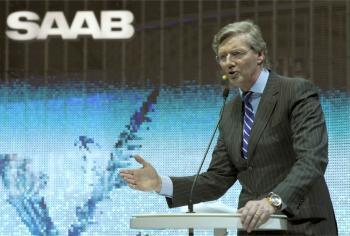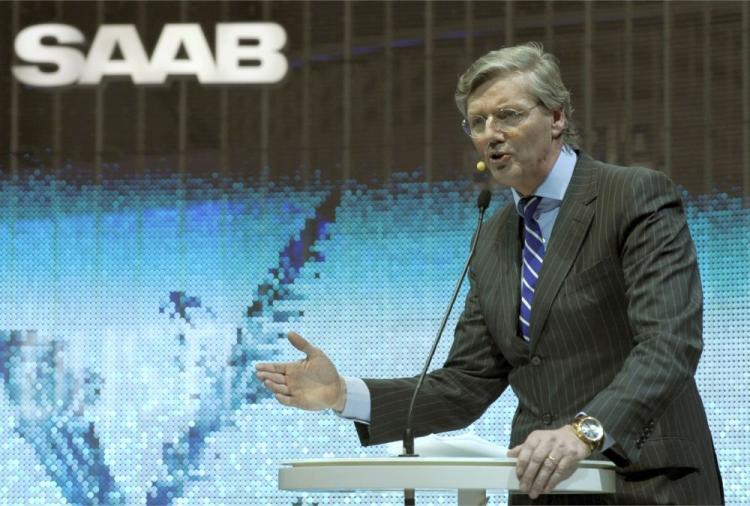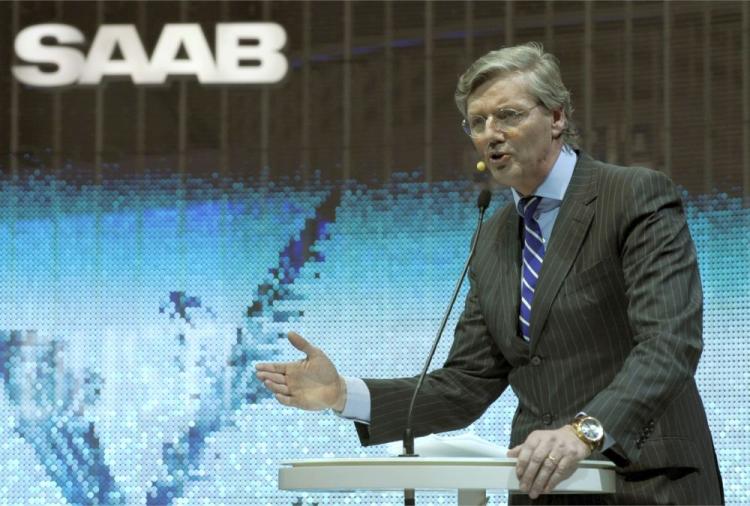After Dutch manufacturer Spyker Cars NV acquired Swedish automaker Saab Cars, it is set to roll out in the near future its first new model using the shared technology of both companies—a rebirth of one of Saab’s most popular models from the 1950s.
“Discussions are already ongoing,” company CEO Victor Muller told Automotive News Europe in a phone interview. “That will be on my plate for the next 100 days.”
Victor Muller decided to use one of Saab’s most successful early models, the Saab 92, which was in production between 1949 and 1956 as a base for the new model’s design, and inject Spyker’s highly innovative technology for performance.
The original Saab 92 model had a tear drop-like body and was powered by a small two-cylinder engine that could speed up to 65 mph at maximum. It won the hearts of many “creative” professionals such as architects in the 1950s with its slick, futuristic design and highly aerodynamic performance. Although a two-cylinder engine does not sound too impressive, Saab 92 captured second place in its class in its first auto race.
The new retro designed model, to be called Saab 92, will be powered by a four-cylinder direct-injection engine, which would make it a lot more fun to drive.
“Saab is going to have to reignite interest in the brand, go back to its core values,” said Ian Fletcher, a European automotive analyst at IHS Global Insight in London. “Muller has to be optimistic.”
Since the acquisition of Saab, Spyker’s shares have risen 35 percent this year.
Victor Muller is now witnessing the positive consequences of his decision to acquire Saab a few months ago.
When asked if the deal to acquire Saab was also good for Spyker, Victor said, “It isn’t good for Spyker. It’s brilliant for Spyker. Suddenly we have acquired a large network of dealers, Saab-dealers, who will now place Spykers in their showrooms—in Paris and Frankfurt, for example. It took Spyker ten years to acquire 35 dealers. Now, with one blow, we have many more.”
Additionally, Muller is planning to withdraw Spyker from Amsterdam stock listing and place it in Stockholm.
“I’m very optimistic about it,” Muller said in a statement, referring to the Stockholm listing. “99.5 percent of our business is Swedish, is Saab, and we do feel that a listing in Amsterdam clearly is no longer logical in any way, shape, or form.”
Saab is planning to roll out a brand new 9-5 model in June, and is forecasting to sell around 17,000 of them this year in addition to another 40,000 next year. In April 2011, it plans to introduce to the market another new model 9-4X, which is a midsize crossover SUV that is being built in a GM plant in Mexico. Overall, Saab aims to double its sales from selling around 50,000 cars this year to 100,000 next year.
“Discussions are already ongoing,” company CEO Victor Muller told Automotive News Europe in a phone interview. “That will be on my plate for the next 100 days.”
Victor Muller decided to use one of Saab’s most successful early models, the Saab 92, which was in production between 1949 and 1956 as a base for the new model’s design, and inject Spyker’s highly innovative technology for performance.
The original Saab 92 model had a tear drop-like body and was powered by a small two-cylinder engine that could speed up to 65 mph at maximum. It won the hearts of many “creative” professionals such as architects in the 1950s with its slick, futuristic design and highly aerodynamic performance. Although a two-cylinder engine does not sound too impressive, Saab 92 captured second place in its class in its first auto race.
The new retro designed model, to be called Saab 92, will be powered by a four-cylinder direct-injection engine, which would make it a lot more fun to drive.
“Saab is going to have to reignite interest in the brand, go back to its core values,” said Ian Fletcher, a European automotive analyst at IHS Global Insight in London. “Muller has to be optimistic.”
Since the acquisition of Saab, Spyker’s shares have risen 35 percent this year.
Victor Muller is now witnessing the positive consequences of his decision to acquire Saab a few months ago.
When asked if the deal to acquire Saab was also good for Spyker, Victor said, “It isn’t good for Spyker. It’s brilliant for Spyker. Suddenly we have acquired a large network of dealers, Saab-dealers, who will now place Spykers in their showrooms—in Paris and Frankfurt, for example. It took Spyker ten years to acquire 35 dealers. Now, with one blow, we have many more.”
Additionally, Muller is planning to withdraw Spyker from Amsterdam stock listing and place it in Stockholm.
“I’m very optimistic about it,” Muller said in a statement, referring to the Stockholm listing. “99.5 percent of our business is Swedish, is Saab, and we do feel that a listing in Amsterdam clearly is no longer logical in any way, shape, or form.”
Saab is planning to roll out a brand new 9-5 model in June, and is forecasting to sell around 17,000 of them this year in addition to another 40,000 next year. In April 2011, it plans to introduce to the market another new model 9-4X, which is a midsize crossover SUV that is being built in a GM plant in Mexico. Overall, Saab aims to double its sales from selling around 50,000 cars this year to 100,000 next year.






